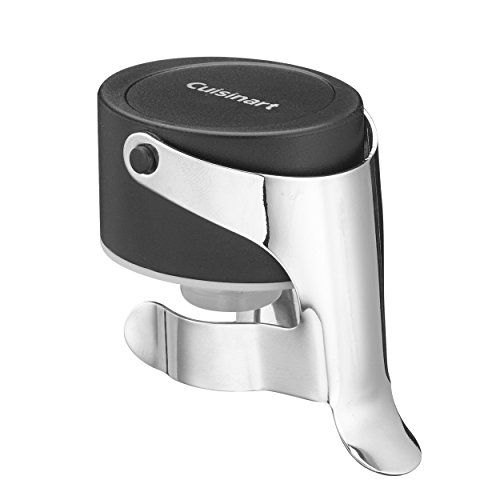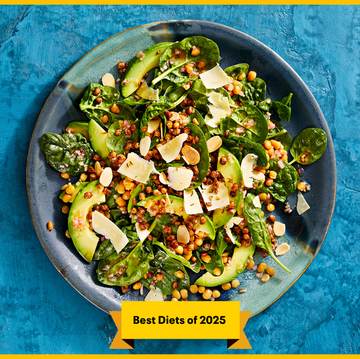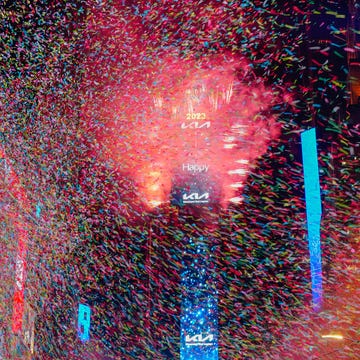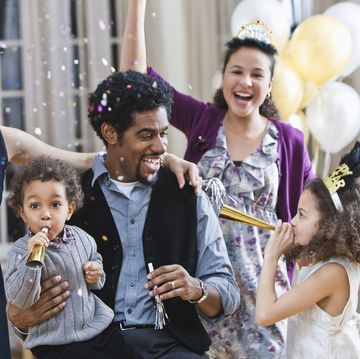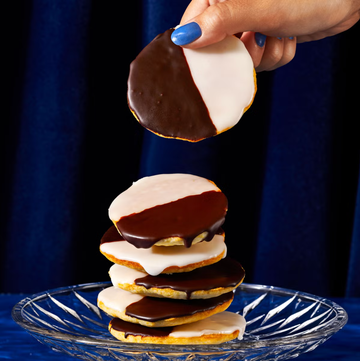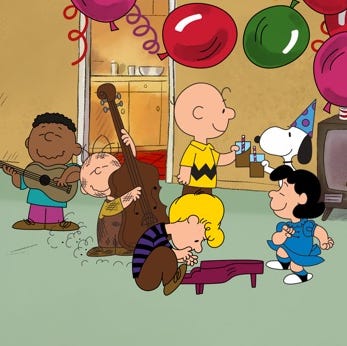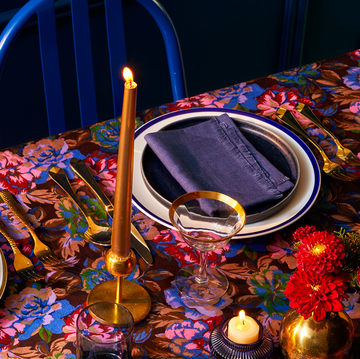Does anyone remember that '90s TV show Central Park West? It was a largely forgettable series that was like a less serious version of HBO’s Succession, but there’s a line that's stuck with me: "A glass of Champagne from a fresh bottle."
That was the very particular drink order of Carrie Fairchild (one of the conniving main characters, deliciously portrayed by Mädchen Amick). Why a fresh bottle, you might ask? Well, the writers probably wanted to show what an entitled brat Carrie was, but there is actually a sliver of rationale for this hyper-specific request. Just like with soda, once you open a bottle of Champagne, the bubbles start dissipating — and it happens pretty quickly, compromising what makes Champagne good (and expensive) in the first place. And, unlike still wine, you can't re-cork a champagne bottle with its original cork.
Luckily, you can buy an $8 champagne stopper to maintain the fresh fizz feeling of your bottles at home. Because who among us can bankroll opening a new bottle of Champagne (or even the best sparkling wines) every time we refill a glass? This gadget, about the size of a spool of thread, is a party essential and I’m shocked more people don’t have one. You’ve spent half a C-note on a bottle of Champagne but won’t drop a few extra dollars to make every sip worth the hefty price tag?! That’s like buying an iPhone but not springing for a protective phone case.
I've been using mine for years and I regularly give out Champagne stoppers as stocking stuffers and hostess gifts. I cannot abide friends and family (or myself when I'm at their house) drinking flat bubbly.
But don't just take my word for it. “A Champagne stopper is essential,” agrees Clément Pierlot, Champagne Pommery’s Cellar Master. “It is specifically designed to tightly seal the bottle, preventing the escape of carbon dioxide and maintaining the sparkling wine’s effervescence.” He says standard wine stoppers won’t work. “Often they do not fit Champagne bottles securely enough to prevent the loss of bubbles.”
A Champagne stopper comes in especially clutch on occasions like New Year’s Eve, when you’ve poured a couple of glasses and need to chill the rest for later. Or maybe you’re topping off a spritz with Prosecco and only need a splash at a time. This handy gadget is not just ideal for all types of sparkling wine, but you can also use it to maintain the bubbles in bottles of cider, beer and even fizzy water.
Does the spoon handle trick work?
In a pinch, many people think sticking the end of a metal spoon into an open Champagne bottle will help keep it effervescent, but Pierlot bursts that bubbly myth. “Even if the method is popular, it is largely a myth, as it doesn’t create an airtight seal and cannot effectively preserve the carbonation.” He does mention that there are also more sophisticated systems for preserving sparkling wines with carbon dioxide counter-pressure such as Coravin sparkling. However, these start at around $300 and make more sense for restaurants and bars than home use.
How do you use a Champagne stopper?
There are a few different styles of Champagne stoppers but they usually have a rubber nub at one end that you insert in the bottle to create a tight seal. Then you lock the stopper in place with a metal clasp that’s either one or two arms. The tight seal keeps oxygen out and the pressure in, helping to preserve the flavor of the wine as well as keep the bubbles intact.
Without the metal clasp, the pressure of the bubbles can make a standard wine stopper or cork shoot out. This actually happened at a friend’s house when she plugged an open Champagne bottle with a standard cork. A little while later we heard a “pop” sound go off in the fridge and saw that the projectile cork cracked the shelf above it. (That’s why sparkling wine bottles have a cage over the top to keep the cork in place. That pressure is no joke!)
How do you open a Champagne stopper?
Holding the bottle with one hand, carefully unclasp the metal arm then slowly pull up the stopper. You should hear a satisfying pop when you remove the contraption. I've tried a few different styles of Champagne stoppers and I much prefer the one-arm clasps to the ones with two — they let me lift the arm and remove the rubber seal with one hand. It allows me to do it in a single seamless motion so I'm ready to pour the next glass of exuberant bubbles.
What should you look for in a good Champagne?
“Bubbles act as a vehicle for the tasting experience,” according to Pierlot. “When enjoying a high-quality glass of Champagne, bubbles should be fine, delicate and rise in a continuous, steady stream.” He says this reflects the precision of the wine-making and aging process. “On the palate, the bubbles should feel creamy and smooth, integrating seamlessly with the wine’s structure, acidity and flavors.” It’s this harmonious balance, Pierlot says, that enhances the sensory experience, making the Champagne refined and luxurious.
None of this happens by accident, of course. The quality of the bubbles is a result of aging and conditions in the cellar, according to Pierlot. Part of his job is to age Champagne at the right temperature and humidity so that each bottle creates a wine that has a roundness and velvety sensation, contributing to softer bubbles.
How long will sparkling wine last with a Champagne stopper?
Sparkling wines are best enjoyed immediately after opening but a Champagne stopper used properly can extend the life of an open bottle by three to five days. Just remember to replace the Champagne stopper immediately after pouring. That way you can lock in the flavor and bubbles so they have nowhere to escape.
Susan (she/her) is the recipe editor at Good Housekeeping, where she pitches ideas, parses words, and produces food content. In the Test Kitchen, she cooks (and samples!) recipes, working with developers to deliver the best written versions possible. A graduate of Brown University and a collaborator on several cookbooks, her previous experience includes stints at Food & Wine, Food Network, three meal kit companies, a wine shop in Brooklyn and Chez Panisse, the pioneering restaurant in Berkeley, California. She enjoys playing tennis, natural wines and reality competition shows.

